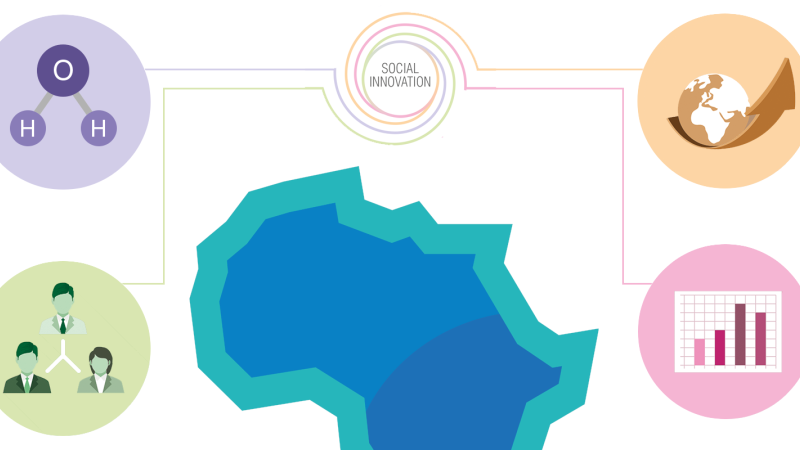
AfriAlliance MOOC#2 Case Studies: Part 3
Following the conclusion of the AfriAlliance MOOC#2, the AfriAlliance partners are delighted to share with you a selection of the excellent final assignments submitted by the participants.
During the final week of the MOOC#2, participants used the lessons that they had learned about social innovation and applied them to a case study that they were familiar within. Using the Social Innovation Factsheet format, and the four AfriAlliance dimensions of social innovation, a range of case studies were covered by the participants.
The AfriAlliance partners have curated a selection of these case studies, which best represent social innovation and the lessons learned during the MOOC#2. Every two weeks, five of these case studies will be shared on the AfriAlliance website and social media. Below find Part 3 of this series - you can download and read each at the bottom of the page!
Case Study #1: Delivering community-owned water and sanitation solutions in Eritrea with UNICEF by Allan Cocun
An application of social innovation to the Eritrean Integrated Water Resource Management Action Plan. The case study assess how social innovation can be applied to the Action Plan to economic efficiency and environmental sustainability in resource management.
Case Study #2: Hydroclimatic and socioeconomic impacts of River sand mining in the IWRM mirror: a perspective from Ikpa river basin, Southeastern Nigeria by Ubong Hezekiah Udoudom
Uses a social innovation model of IWRM to assess the impact of climate change and anthropogenic activities on the socioeconomic status of people in Ikpa river basin.
Case Study #3: Improved Access to Quality Water for Villages and Schools in Rural Benin by Esdras Abréwa Rêmilokoun Obossou
A case study investigating the potential role of social innovation in improving access to water in rural Benin. This study uses a project in the north of the country as an example of improving access to water.
Case Study #4: Saving water with little to no funding by Mamohau C. Mpojane
How can social innovation be used to increase water efficiency and reduce wastage with little money? This case study assesses how conservation wells can be an example of water saving on a low budget, while considering how this innovation relates to the four dimensions of social innovation
Case Study #5: Sponge Town for urban climate resilience, Case of Kwa Vonza and Kajiado towns in Kenya by Nancy Kadenyi
A look at how the concept of a Sponge City can be applied to several towns in Kenya. Using the social innovation model, this case study outlines the benefits of adopting this concept.
Downloads
- Case Study #1: Delivering community-owned water and sanitation solutions in Eritrea with UNICEF_Allan COCUN (PDF, 470.54 KB)
- Case Study #2: Hydroclimatic and socioeconomic impacts of River sand mining in the IWRM mirror_Ubong Hezekiah Udoudom (PDF, 376.38 KB)
- Case Study #3: Improved Access to Quality Water for Villages and Schools in Rural Benin_Esdras Abréwa Rêmilokoun Obossou (PDF, 409.59 KB)
- Case Study #4: Saving water with little to no funding_MC Mpojane (PDF, 203.42 KB)
- Case Study #5: Sponge Town for urban climate resilience, Case of Kwa Vonza and Kajiado towns in Kenya_Nancy Kadenyi (PDF, 467.65 KB)
